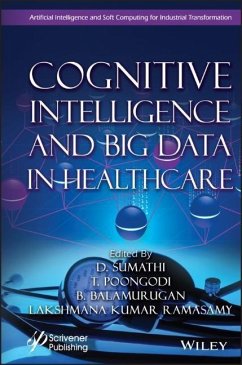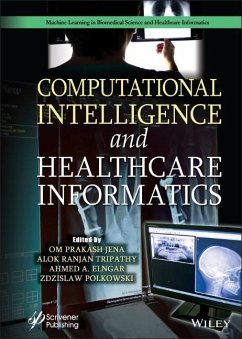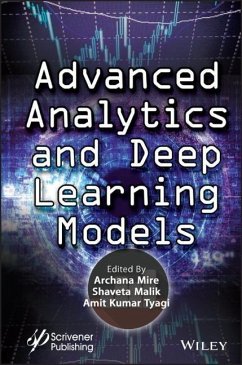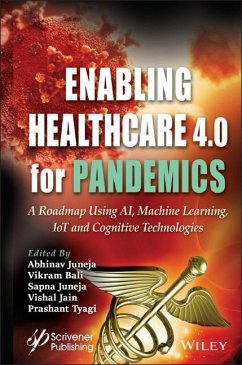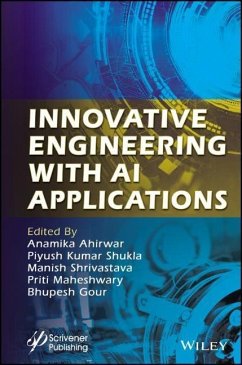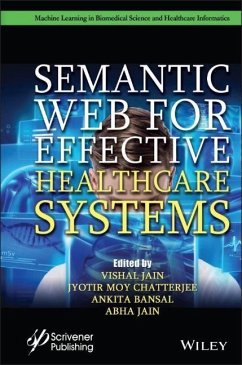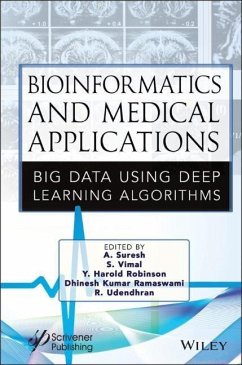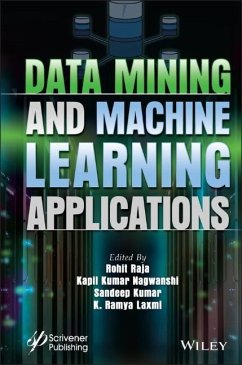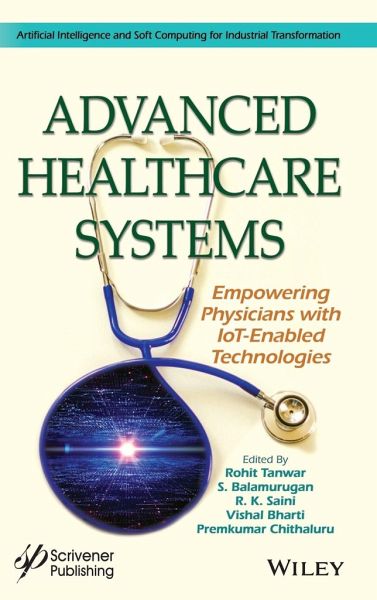
Advanced Healthcare Systems
Empowering Physicians with Iot-Enabled Technologies
Herausgegeben: Tanwar, Rohit; Balamurugan, S.; Saini, Rakesh Kumar; Bharti, Vishal; Chithaluru, Premkumar
Versandkostenfrei!
Versandfertig in über 4 Wochen
214,99 €
inkl. MwSt.
Weitere Ausgaben:

PAYBACK Punkte
107 °P sammeln!
Dieses Werk, das sich umfassend mit der Einführung von maschinellem Lernen, KI und dem IoT im Gesundheitswesen beschäftigt, richtet sich an Forschende, Fachkräfte im Gesundheitswesen, Wissenschaftler und Technologen.Die Nutzung von maschinellem Lernen und künstlicher Intelligenz im Internet der Dinge (IoT) für Anwendungen im Gesundheitswesen sowie die damit einhergehenden Herausforderungen werden ausführlich erörtert.Das IoT erzeugt gewaltige Datenmengen von unterschiedlicher Qualität. Die intelligente Verarbeitung und Analyse dieser Datenmengen sind der Schlüssel zur Entwicklung inte...
Dieses Werk, das sich umfassend mit der Einführung von maschinellem Lernen, KI und dem IoT im Gesundheitswesen beschäftigt, richtet sich an Forschende, Fachkräfte im Gesundheitswesen, Wissenschaftler und Technologen.
Die Nutzung von maschinellem Lernen und künstlicher Intelligenz im Internet der Dinge (IoT) für Anwendungen im Gesundheitswesen sowie die damit einhergehenden Herausforderungen werden ausführlich erörtert.
Das IoT erzeugt gewaltige Datenmengen von unterschiedlicher Qualität. Die intelligente Verarbeitung und Analyse dieser Datenmengen sind der Schlüssel zur Entwicklung intelligenter IoT-Anwendungen, wodurch Raum für die Nutzung des maschinellen Lernens (ML) geschaffen wird. Mit ihren Recheninstrumenten, die bei der Erledigung bestimmter Aufgaben die menschliche Intelligenz ersetzen können, macht es die künstliche Intelligenz (KI) möglich, dass Computer aus Erfahrung lernen, sich an neue Eingaben anpassen und bisher von Menschen durchgeführte Aufgaben übernehmen. Da IoT-Plattformen eine Schnittstelle bieten, um Daten von unterschiedlichen Geräten zusammenzutragen, lassen sie sich leicht mit AI/ML-Systemen verbinden. Vor diesen Hintergrund besteht der Wert der KI in ihrer Fähigkeit, schnell Erkenntnisse aus Daten zu gewinnen, automatisch Muster zu erkennen und Anomalien in den von intelligenten Sensoren und Geräten erzeugten Daten zu erkennen ? aus Angaben zu Temperatur, Druck, Luftfeuchtigkeit, Luftqualität, Schwingungen und Geräuschen ? die für eine schnelle Diagnose extrem hilfreich sein können.
Die Nutzung von maschinellem Lernen und künstlicher Intelligenz im Internet der Dinge (IoT) für Anwendungen im Gesundheitswesen sowie die damit einhergehenden Herausforderungen werden ausführlich erörtert.
Das IoT erzeugt gewaltige Datenmengen von unterschiedlicher Qualität. Die intelligente Verarbeitung und Analyse dieser Datenmengen sind der Schlüssel zur Entwicklung intelligenter IoT-Anwendungen, wodurch Raum für die Nutzung des maschinellen Lernens (ML) geschaffen wird. Mit ihren Recheninstrumenten, die bei der Erledigung bestimmter Aufgaben die menschliche Intelligenz ersetzen können, macht es die künstliche Intelligenz (KI) möglich, dass Computer aus Erfahrung lernen, sich an neue Eingaben anpassen und bisher von Menschen durchgeführte Aufgaben übernehmen. Da IoT-Plattformen eine Schnittstelle bieten, um Daten von unterschiedlichen Geräten zusammenzutragen, lassen sie sich leicht mit AI/ML-Systemen verbinden. Vor diesen Hintergrund besteht der Wert der KI in ihrer Fähigkeit, schnell Erkenntnisse aus Daten zu gewinnen, automatisch Muster zu erkennen und Anomalien in den von intelligenten Sensoren und Geräten erzeugten Daten zu erkennen ? aus Angaben zu Temperatur, Druck, Luftfeuchtigkeit, Luftqualität, Schwingungen und Geräuschen ? die für eine schnelle Diagnose extrem hilfreich sein können.





